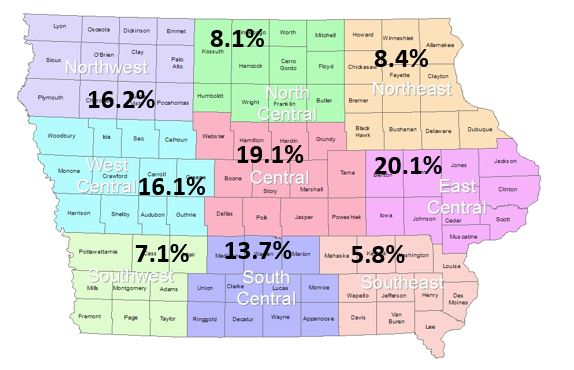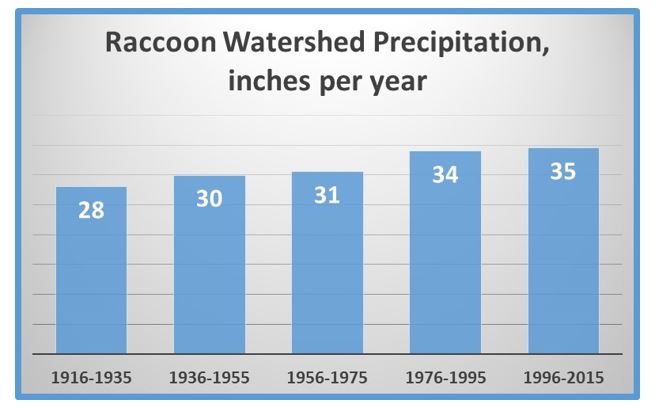Pulitzer Prize winner Art Cullen recently published an interesting article about climate change and stream nitrate in the Storm Lake Times (link). I like this article. I always think a person could not have farmed in Iowa over the last 50 years and not know that things have changed–a lot. Maybe not so much with temperature, but without question precipitation. I wrote about this several months ago (link) and with some colleagues, recently submitted an article for journal review. The graphs below illustrate precipitation increases over the last 100 years in Iowa by crop district, and also in the Raccoon River Watershed.


Year to year variations in nitrate loads (total mass delivered to streams) are really driven by precipitation and discharge, and the effect is not linear. (This is not to say that rainy weather causes bad water quality–see earlier post on this: link). In other words, modest increases in precipitation can produce large increases in both river flow and nitrate loading. Research conducted by Jha et al. (2004) and Singh et al. (2009) indicate that precipitation levels in Iowa could increase another 21-32% by 2050. In our recently-submitted research, we looked at historical nitrate data across nine Iowa watersheds and evaluated how it changed with precipitation. We then used that data to estimate how nitrate loads will increase in the next 35 years with the expected increases in precipitation. We found that overall, for every 1% increase in precipitation, nitrate loads would increase 3.3%. This varied between watersheds from a low of 2.1% to 5.6% more nitrate for every 1% increase in precipitation. These increases assume stationarity–in other words, everything else stays the same. But as the Art Cullen article articulates, farmers are unlikely to stand pat as Iowa gets wetter. More tile will go in, increasing the potential for nitrate loss to streams. Increases in precipitation could overwhelm efforts to better manage fertilizer inputs.
Thus in our estimation, Iowa appears poised to deliver increased loads of nitrate to the Mississippi basin. Detaining and processing more water within the cropping system itself will be paramount if water quality goals are to be achieved. This likely will require land use and land cover change directed toward affecting the water balance within agricultural basins. Cover crops and living mulches grown concurrently with annual row crops are one way to do that within the current cropping system.
Scroll down to see graph below that illustrates expected change in nitrate load as precipitation increase in the nine studied watersheds.

References
Jha, M., Pan, Z., Takle, E.S. and Gu, R., 2004. Impacts of climate change on streamflow in the Upper Mississippi River Basin: A regional climate model perspective. Journal of Geophysical Research: Atmospheres, 109(D9).
Singh, R., Helmers, M.J., Kaleita, A.L. and Takle, E.S., 2009. Potential impact of climate change on subsurface drainage in Iowa’s subsurface drained landscapes. Journal of irrigation and drainage engineering, 135(4), pp.459-466.